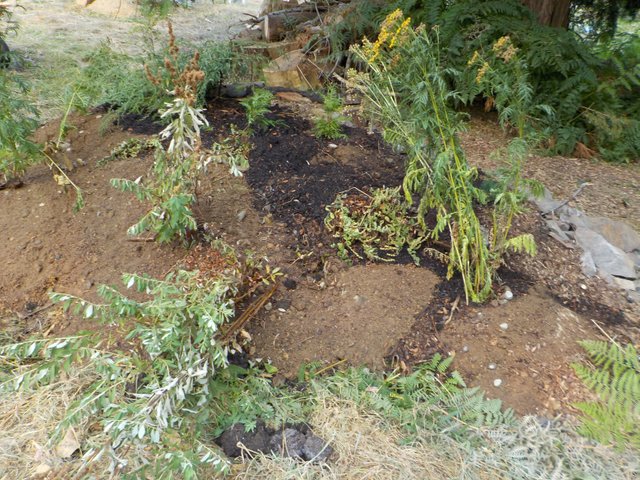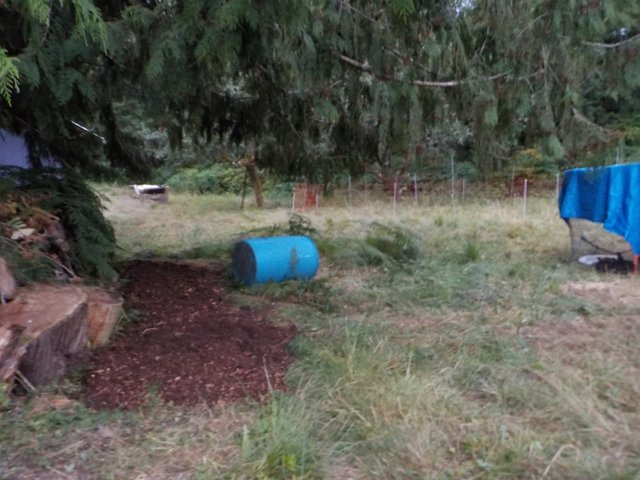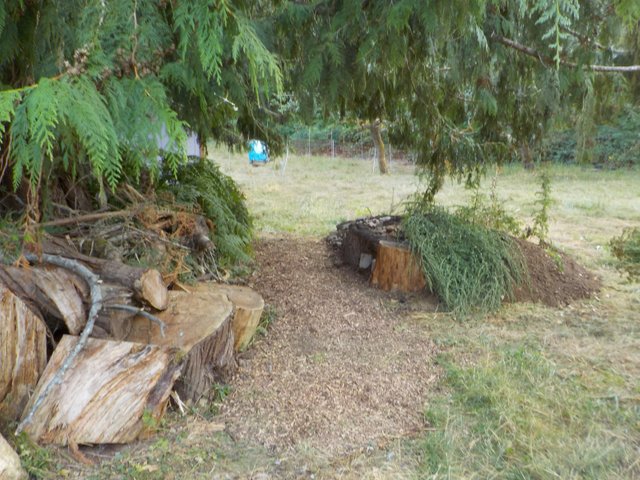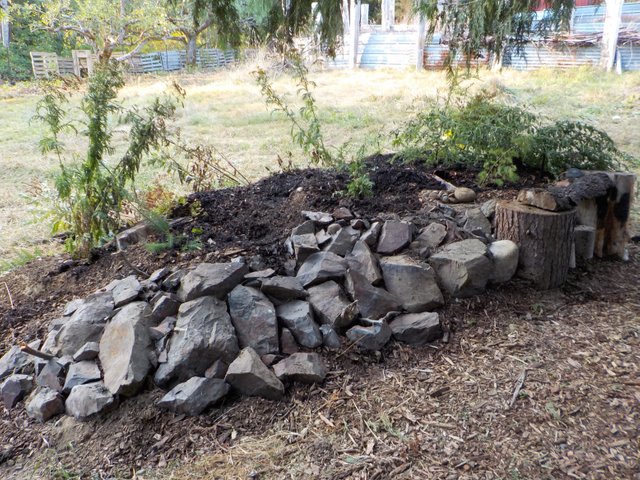Permaculture - Plant Islands
Shifting away from grassy turf on Leafhopper Farm invites more diversity, better water retention, more fertility to the soil, and the mimicking of more natural habitat suited to a temperate rain forest. These layers of added “value” are what permaculture is all about.
This particular plant island project also included the establishment of a footpath and the restoration of the ground around a large Red Cedar Thuja plicata to protect its roots. Human movement in a community space is very important. Details like where the shortest distance between to points will quickly show in the worn down trails out feet carve out of the soil. Compaction over time will wear down the trail creating low spots where water builds up with no where to drain. In many instances, foot paths move around trees, exposing rootlets which in time, may hinder growth, and ultimately compromise the flora nearby.
Footpaths are inevitable. After working for a few summers in Central Park, NYC, I saw first hand the devastation wrought by millions of walking enthusiasts in a park setting. The foot trails told us where people wanted to go, and though there might have been a paved path near by, if there is a shorter rout, the feet will find it. We would sometimes have to fence off a corner, or put in a new sidewalk to prevent erosion and compaction. Here at Leafhopper Farm, we are not dealing with millions, or even thousands, however, even two people walking twice a day back and forth between bedroom and kitchen can carve out a trail. The easiest fix is mulching and guiding the path’s rout. In the picture above, mulch has been spread about three feet across on the old path, but the rout has been shifted slightly to the left, and rerouted using a blue barrel to block the old trail.
I chose to create the plant island here because the cedar had a large root exposed on the surface of this space and because the shelter of the cedar would protect young evergreen trees and shade loving plants of the native under-story. To the left in the photo above you can also see a stumpery inspired by Highgrove Garden. Piling up biomass is a wonderful way to bank long term fertility in your soil. Of course, the soil will not be a flat sheet, but a bumpy, hilly mound of good organic matter full of micro climates.
This mound was built up using fruit tree prunings, mulch, topsoil, and compost. On the trail side of the material, rocks hold the soil back from the foot path and a bench on the north side of the bank offers a respite along the way. The rocks are not stacked, nor are they set in expectation of holding long term. This island will sink, settle, and slide down hill over time. I’m fine with that, in the mean time, it hosts young trees and other shade loving plants that will cultivate a community of forest for the future. Eventually, these young trees will be dug up once more and moved into the actual forested area of the land. For now, they sit safely in this nursery space where deer are less likely to eat them in this vulnerable sate.
Trees, Shrubs, and Ground Covers
The verity of plants in this island are quite special. The trees are small, but in time, they will be much like the Cedar towering above, creating more forest habitat. Red Cedars are the “climax species” in The Pacific Northwest. There are two young ones in this island. Two other tree species represented are Douglas Fir Pseudotsuga menziesii and Western Hemlock Tsuga heterophylla. Some Butterfly Bush Buddleia davidii is planted here and though it is considered a noxious weed in Washington, this cultivated space will be well tended to prevent the spreading. It is a great pollinator species. Sala Gaultheria shallon is establishing here. Though in most places Sala is common, we have NONE on the land outside this island. Hopefully, that will change in time, with the establishing of more plant island and transplanting.
Nature takes her time, and we humans love to rush things. Establishing the plant islands allows me to mimic nature, bring in more native plants, and create much needed habitat while improving human access to the facilities and beautifying the land.
Thanks for stopping by and have a wonderful day!
Liz Crain
@leafhopperfarm
WEBSITE: leafhopperfarm.com
TWITTER: twitter.com/LeafhopperFarm
MINDS: minds.com/leafhopperfarm
YOUTUBE: https://youtu.be/Uk3Ci_qI9sI



This is awsome, I love how it so organized. Thank you for sharing and planting ideas in my head. Upvote
Just checked out your website :). Nice! Loved your goats!
This is like Hugelkulter ... great stuff. We do something similar with fallen logs and tree prunings to make raised beds for fruit trees and veggies. Nice work
Congratulations! This post has been upvoted from the communal account, @minnowsupport, by dudebro from the Minnow Support Project. It's a witness project run by aggroed, ausbitbank, teamsteem, theprophet0, someguy123, neoxian, followbtcnews/crimsonclad, and netuoso. The goal is to help Steemit grow by supporting Minnows and creating a social network. Please find us in the Peace, Abundance, and Liberty Network (PALnet) Discord Channel. It's a completely public and open space to all members of the Steemit community who voluntarily choose to be there.
Congratulations @leafhopperfarm! You have completed some achievement on Steemit and have been rewarded with new badge(s) :
Click on any badge to view your own Board of Honor on SteemitBoard.
For more information about SteemitBoard, click here
If you no longer want to receive notifications, reply to this comment with the word
STOPvery interesting, upvoted
i want show beautiful pictures of sunset in Hawaii, USA :
https://steemit.com/travel/@redouanemez/beautiful-sunset-in-hawaii-usa